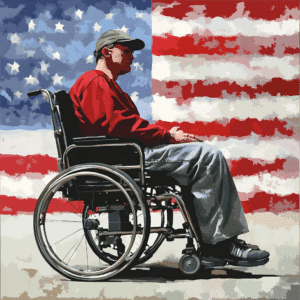The Unseen Intersection Between Domestic Violence and Addiction
Domestic violence and addiction are catastrophic social issues that often exist in the shadows, cultivating hidden tragedies. Like two sides of the same troubled coin, when these crises intersect, the consequences can be devastating. Understanding how addiction can exacerbate domestic violence, and vice versa, reveals their sinister dance in the lives of countless families.
Addiction rewires the brain to seek out substances, igniting irrational, violent, or controlling behavior. Nearly 80% of domestic violence crimes are linked to drug use, casting a harsh light on the link between these issues. Conversely, being a victim of violence can lead to substance abuse as a coping mechanism, setting off a vicious cycle of harm and dependency. Both situations create environments teeming with fear, anxiety, and relentless stress.
The Dual-Diagnosis Dilemma: When Mental Health and Substance Abuse Coexist
Individuals grappling with both mental health disorders and substance abuse—commonly referred to as dual-diagnosis patients—are at heightened risk for domestic violence. Dual diagnosis complicates treatment, transforming the recovery process into a multifaceted battlefield.
For families experiencing dual-diagnosis, this dual-approach is crucial. Without it, they risk perpetuating both violence and addiction, buried under layers of untreated trauma.
| **Aspect** | **Details** |
|---|---|
| Prevalence of Substance Abuse in Domestic Violence | Nearly 80% of domestic violence crimes are related to the use of drugs. |
| Impact of Substance Abuse on Behavior | Drugs rewire brain chemistry to prioritize substance use, potentially leading to irrational, violent, or controlling behavior. |
| Trauma and Subsequent Addiction | Victims of violence may turn to substance use due to trauma-induced fear, anxiety, and stress, which can increase addiction risk. |
| Myths and Misconceptions | A common myth is that alcohol and drugs are the primary causes of domestic abuse. Many abusers use substance abuse as an excuse. |
| Health Consequences of Domestic Violence | Victims face increased risk of PTSD, depression, and suicide, along with various physical injuries and long-term health effects. |
| Cycle of Abuse and Addiction | Substance abuse can perpetuate the cycle of domestic violence, where the abuser blames substances to escape accountability. |
| Prevention and Support Approaches | Comprehensive support for survivors, including mental health and addiction services, is crucial for breaking the cycle of abuse. |
| Critical Statistics | – 80% of DV crimes linked to substance use. |
| Dates Noted for Data | – July 29, 2024 – Addiction rewiring the brain |
| – May 18, 2018 – Trauma affecting the brain leading to addiction |
The Role of Trauma in Fueling the Cycle of Violence and Addiction
Trauma frequently underpins the fragile connection between domestic violence and addiction. Early exposure to violence paves the pathway to substance abuse, often as an escape from haunting memories. Alternatively, addiction can perpetuate cycles of violence, entrapping families in ongoing turmoil.
Addressing trauma with specific, targeted therapies is crucial. It’s fundamental to understand trauma’s ripple effect within the family unit, leading to holistic and effective interventions.
Impact on Families: The Silent Sufferers
Domestic violence and addiction ripple through entire families, leaving children and other family members grappling with unspoken pain. The fallout affects everyone, making families the silent sufferers caught in these crises.
Breaking the silence and addressing these issues head-on is pivotal. This leads to the preservation of Family Resilience and promotes pathways towards healing and stability.
Gender-Specific Challenges in Addressing Domestic Violence and Addiction
The intersection of domestic violence and addiction poses unique challenges for men and women, reflecting differing manifestations across genders. Women often face greater vulnerability to violence, while men may struggle with stigmas preventing them from seeking help.
These gender-specific programs underscore the necessity of bespoke approaches in effectively addressing these intertwined crises.
Socioeconomic Factors: Poverty, Access to Care, and Cultural Contexts
An individual’s socioeconomic background profoundly influences the prevalence and treatment of domestic violence and addiction. Factors like poverty, access to healthcare, and cultural stigmas play critical roles.
Effective solutions must holistically consider these socioeconomic influences to make a meaningful impact.
Legal and Policy Implications: Moving Toward Comprehensive Solutions
Legal frameworks and public policies are critical in addressing domestic violence and addiction. However, current legal protections and available resources often fall short of meeting the multifaceted needs these crises present.
Through meticulous advocacy and robust policy-making, tangible improvements in addressing domestic violence and addiction can be achieved.
Innovative Solutions: Technological and Community-Based Approaches
Tackling the intersection of domestic violence and addiction necessitates innovative solutions extending beyond traditional methods. Community-based initiatives and technological advancements offer new avenues for addressing these severe issues.
These innovations highlight the importance of evolving strategies in combating these hidden tragedies.
Paving the Way for a Brighter Future
Tackling the crises of domestic violence and addiction demands multifaceted approaches, encompassing comprehensive care, community support, and strong legal frameworks. Addressing the intertwined nature of these issues and their root causes leads to recovery and safety for countless families. Collaborative efforts can transform hidden tragedies into tales of resilience and triumph, igniting hope for a brighter, safer future.
By taking decisive action, we can make a substantial difference, turning the tide against these heartbreaking tragedies. Let’s unite to ensure families have the support and resources they need to overcome these battles and emerge stronger.
Visit Mothers Against Addiction to learn more about how we can help parents of children struggling with addiction or those who’ve lost a child to addiction.
Every step we take paves the way towards family resilience, recovery, and ultimately, healing.
Domestic Violence and Addiction: Hidden Tragedies
Surprising Connections
When folks talk about domestic violence and addiction, it’s easy to see them as separate issues. The truth is, they often go hand-in-hand, creating a web that’s tough to break free from. Here’s a startling tidbit: did you know that addiction can often be a coping mechanism for those experiencing domestic violence? Similarly, those struggling with addiction are more likely to be both the victims and perpetrators of violence. To tackle this, connecting with friends and family for support can make a huge difference, even giving people the strength to seek professional help.
The Role of Family
Family plays a massive role in both these crises. In situations of domestic violence, the support of loved ones can either make or break the recovery process. Often, families might be unaware of the signs of substance abuse or domestic violence, and that’s where education and programs come in. Take, for instance, Addiction prevention in families programs. They help families understand the early warning signs and strategies to keep their loved ones safe. But it’s not all doom and gloom; sometimes, a simple family meal, much like kids cuisine gatherings, can provide a semblance of normalcy and hope.
The Lingo and Misconceptions
Understanding the jargon and addressing misconceptions can be a big deal. Many people don’t know about the connection between addiction and domestic violence, brushing it off as “just talk,” or codswallop as some old-timers say. But knowing the basics can be essential, like understanding the .net meaning behind addiction networks that offer support and resources for those in crisis.
Support Systems
Building a solid safety net involves various support systems. Programs such as Family recovery programs cater to entire families affected by these dual crises, offering resources and rallies to boost their morale. And speaking of support, platforms like friendsinternational play a crucial role by extending their services globally, enabling folks to learn and share experiences, turning the tide in these hidden tragedies.
These connections between domestic violence and addiction are a sobering reality, but with the right knowledge and support, we can make strides toward healing and prevention.
What is the relationship between addiction and domestic violence?
Addiction and domestic violence are closely tied. Nearly 80% of domestic violence crimes involve drug use, which rewires the brain to crave the substance and can lead to irrational and violent behavior.
Can violence and trauma lead to addiction?
Violence and trauma can definitely lead to addiction. Traumatic events throw the brain into overdrive, causing constant fear, anxiety, and stress, which some people turn to substances to cope with.
What is the relationship between alcoholism and domestic violence?
Alcohol and domestic violence have a complicated relationship. Abusers often use alcohol as an excuse for their violent behavior, but alcohol itself isn’t the root cause of abuse.
How does domestic violence affect the victims mentally?
Domestic violence can severely impact mental health. Victims often face PTSD, depression, and even an increased risk of suicide due to the trauma they endure.
How does domestic abuse change the brain?
Domestic abuse rewires the brain. Repeated exposure to violence makes the brain more reactive to stress and fear, which can lead to lasting psychological effects and potential addiction.
How are trauma and addiction related?
Trauma and addiction are deeply related. Experiencing trauma, especially at a young age, increases the risk of self-medicating with drugs or alcohol to manage overwhelming emotions.
Is a trauma bond like an addiction?
A trauma bond can feel a lot like an addiction. The victim may feel an intense attachment to their abuser, much like how someone addicted to a substance can’t easily let go of it.
How do you recover from trauma addiction?
Recovering from trauma addiction involves therapy and support. It’s crucial to address both the addiction and the underlying trauma through counseling, support groups, and sometimes medication.
Can a traumatic brain injury cause addiction?
A traumatic brain injury can increase the risk of addiction. The injury can alter brain function, making it harder to manage emotions and impulses, which might lead to substance use.
What happens to the family of an alcoholic?
The family of an alcoholic often faces emotional turmoil, financial strain, and even physical danger. Kids may feel neglected or develop emotional and behavioral issues.
Is alcohol or drug use involved in 40 60 of domestic abuse situations?
Alcohol or drug use is involved in almost 80% of domestic abuse situations. Substance use can escalate tensions and result in more violent confrontations.
How does living with an alcoholic parent affect the child?
Living with an alcoholic parent can severely affect a child. They might struggle with anxiety, depression, trust issues, and might even turn to substances themselves as they grow up.
What mental illness is often associated with domestic violence?
PTSD is often linked with domestic violence. Many victims develop this disorder because of the constant trauma and fear they experience in abusive relationships.
What are the long-term effects of domestic violence?
The long-term effects of domestic violence include chronic mental health issues like depression, anxiety, and PTSD, along with potential long-term physical health problems.
How to heal from domestic abuse?
Healing from domestic abuse requires professional help. Therapy, support groups, and possibly medication can aid in recovering from the trauma and rebuilding one’s life.
What is the relationship between intimate partner violence and substance use?
Intimate partner violence and substance use are often interconnected. Substance abuse can escalate violent incidents, and some victims use substances to cope with their situation.
What is the relationship between drug abuse and substance abuse?
Drug abuse and substance abuse are essentially the same thing—using drugs or alcohol in harmful amounts. They both can lead to addiction and have severe health consequences.
What is the link between mental health and domestic violence?
Mental health and domestic violence are closely linked. Experiencing violence can cause or worsen mental health issues, making recovery even more challenging.
What is the relationship between substance abuse and criminal behavior?
Substance abuse often leads to criminal behavior because the addiction drives individuals to engage in illegal activities to support their habit. This can include theft, assault, and other crimes.




























